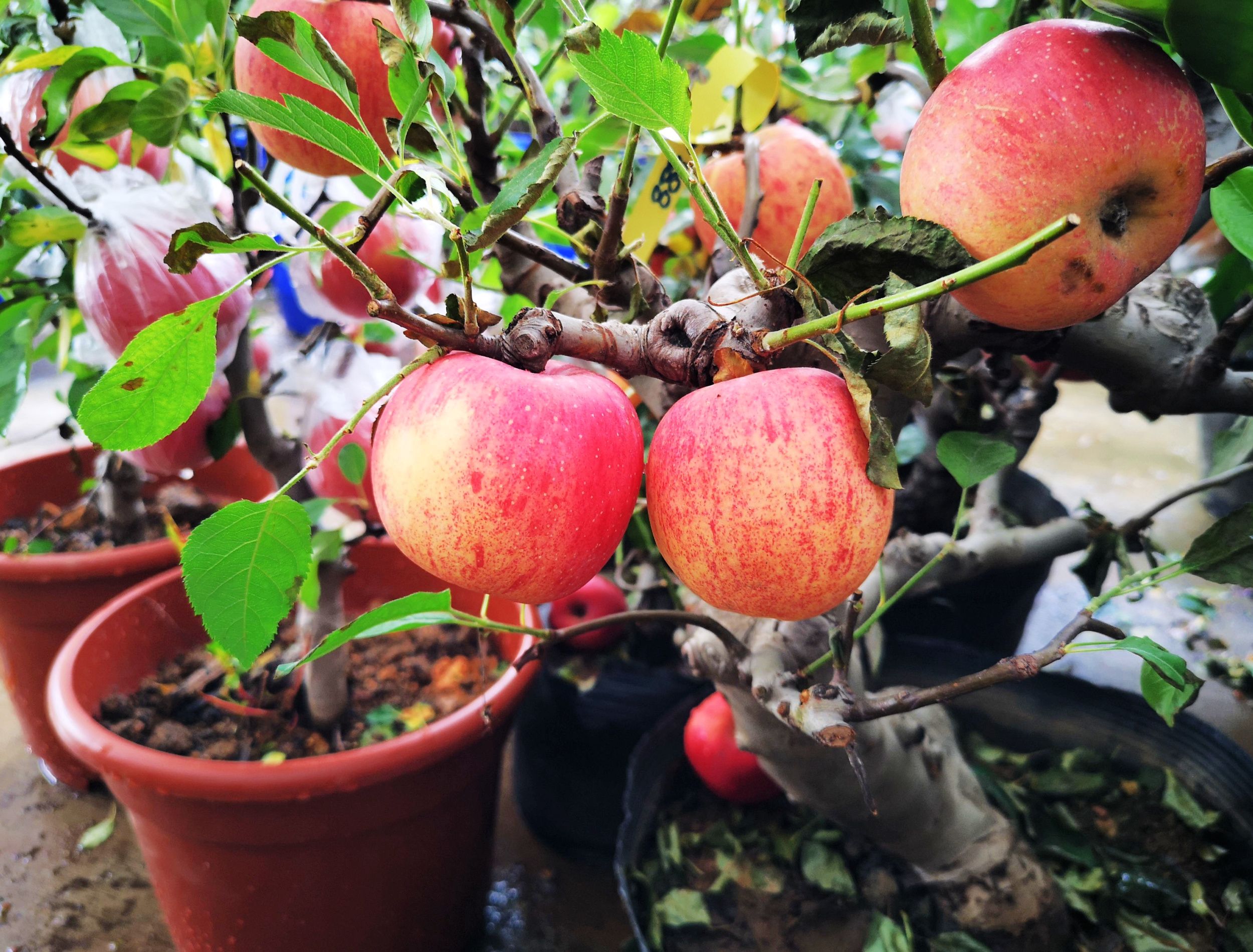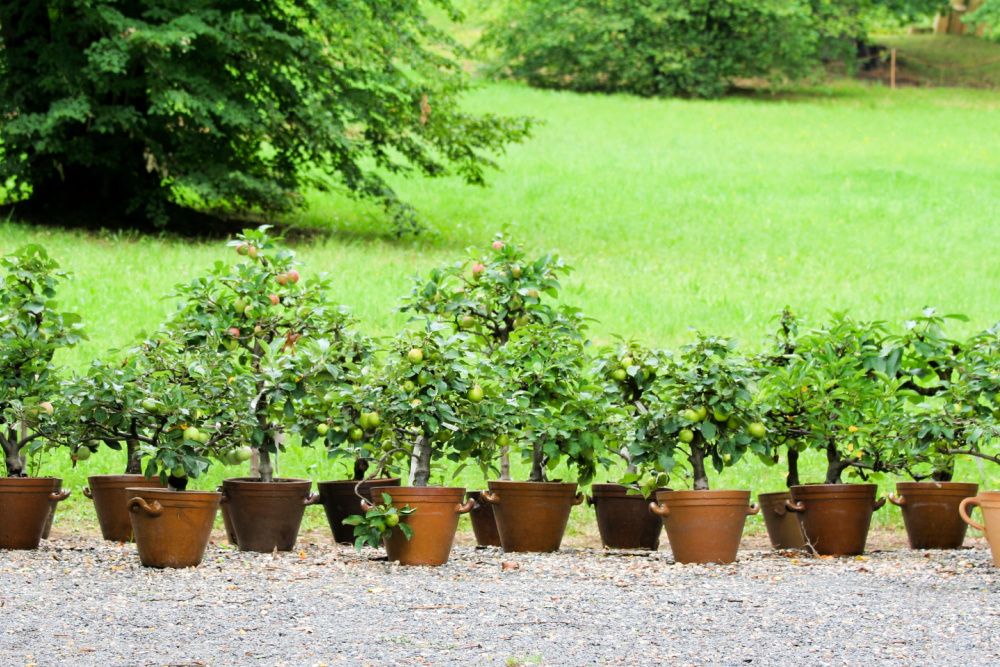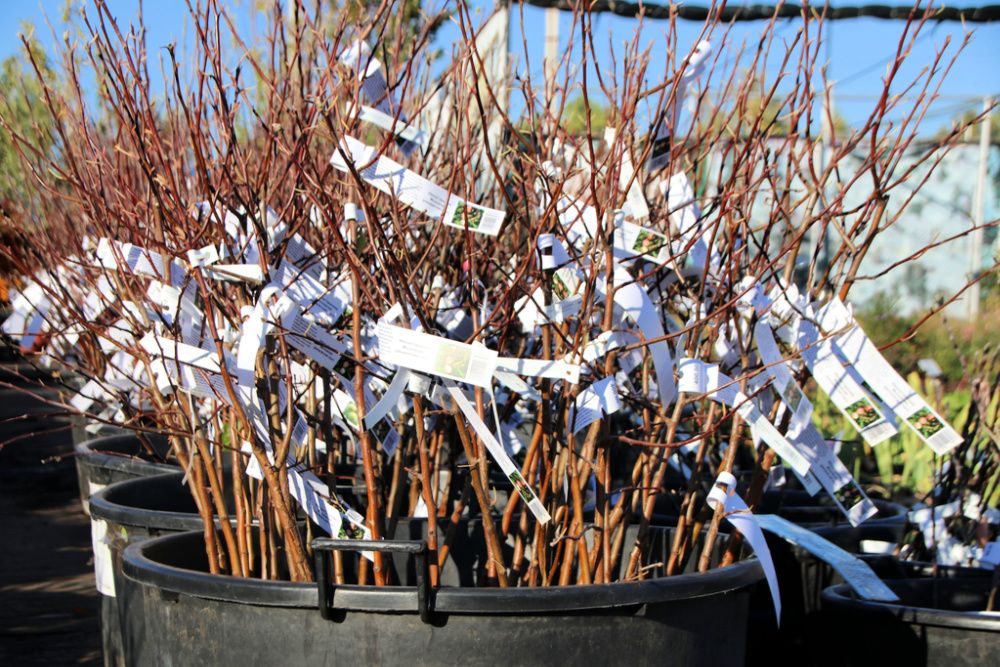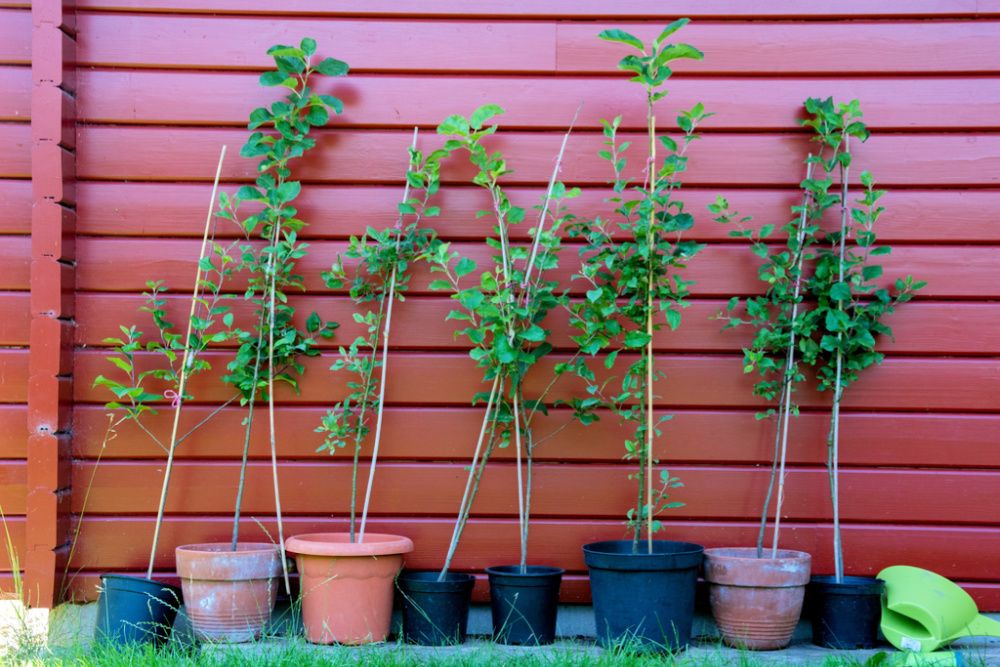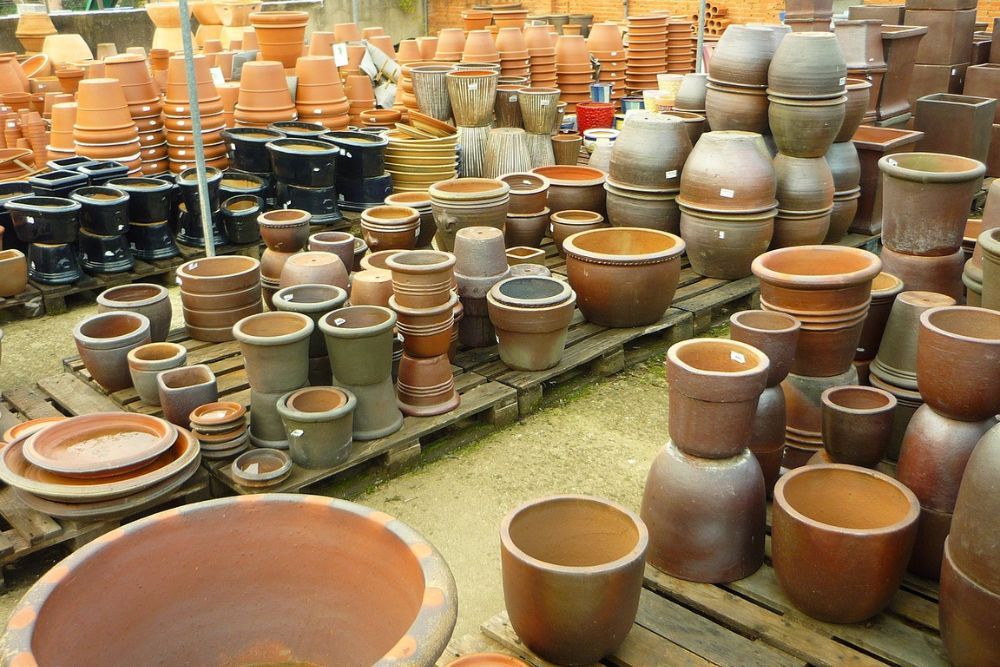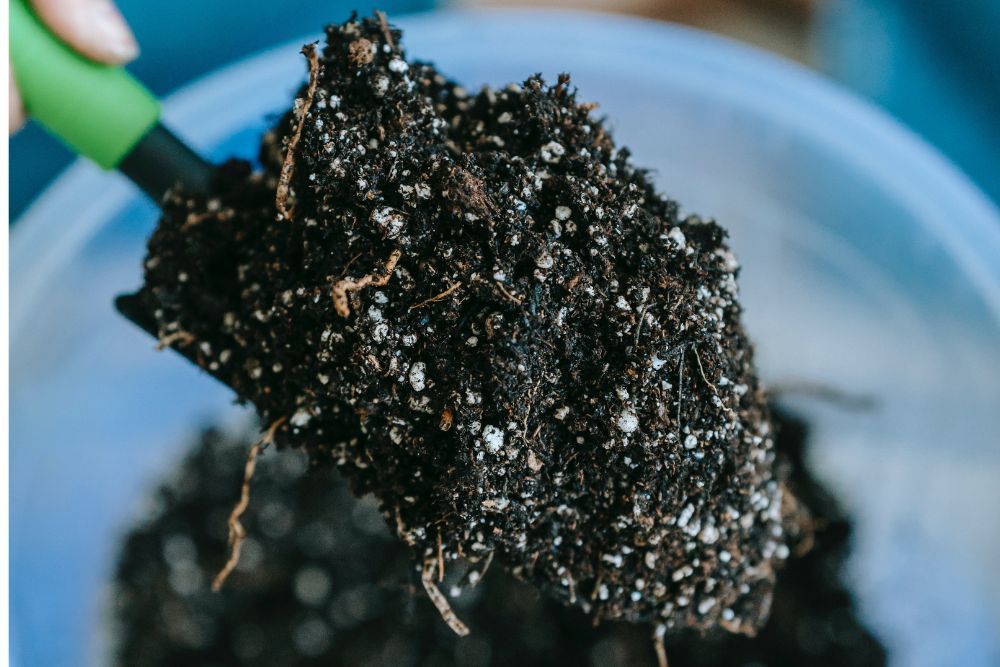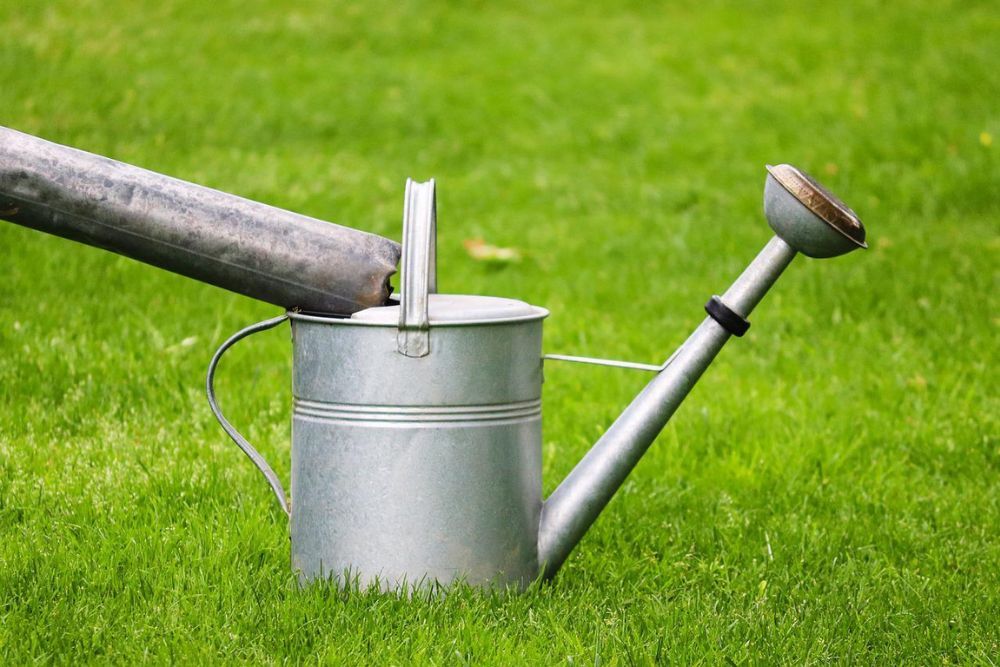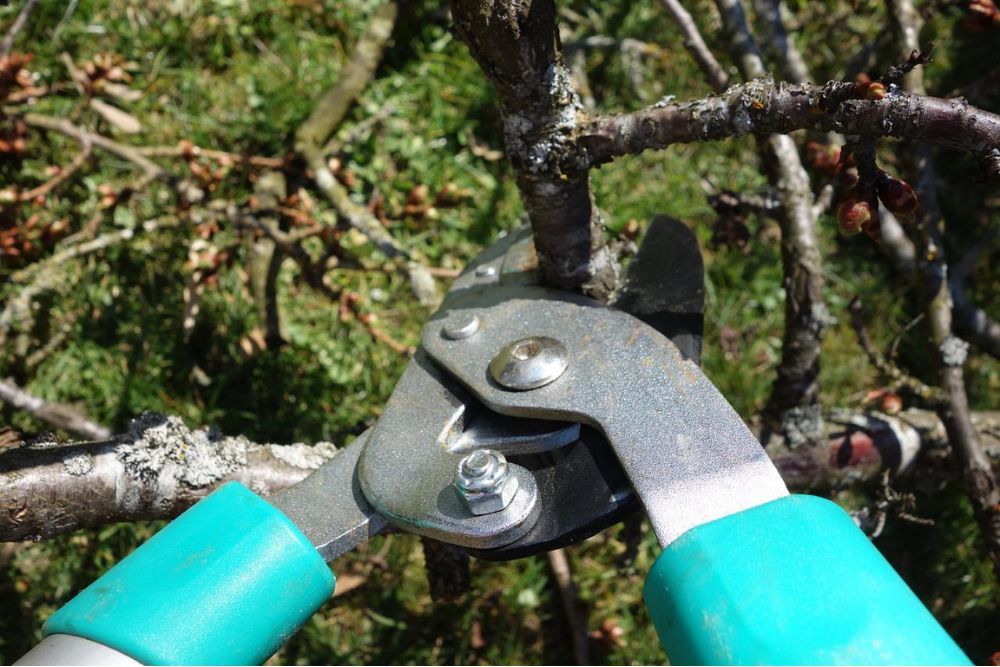When it comes to growing your own fruit, time, effort, and space are the three key elements for success. But what happens when you have limited space? Well, if you hope to grow an apple tree, you’re in luck! Apple trees will grow in containers!
Although it seems impossible due to the size of some apple trees, growing one in a container is achievable. With the right sized container and consistent care, an apple tree will grow without complaint on your porch, deck, or backyard.
Want to reap the rewards of a fruitful tree? Here is everything you need to know about growing apple trees in containers!
Materials Required
Image credits: DanielW via Shutterstock
For the best results, have the following items and materials handy:
- Apple sapling
- Potting soil
- Compost
- Fertilizer
- Garden shovel
- Gardening gloves
- Container
- Watering can
Where to Find an Apple Tree
Image credits: photowind via Shutterstock
To find your future apple tree, check out local gardening centers or tree nurseries. Some apple trees are even available for purchase online! Note that trees will come in various stages of growth (including seedlings, small saplings, or for the brave, seeds).
Whatever growth stage you plan to purchase, there are a few things to consider. If you choose to plant an apple tree from seed, the seeds require preparation before planting (75 days, to be precise!). Saplings of any size should only be planted after frosts have passed.
Select Your Apple Tree
Image credits: Luca Pape via Shutterstock
Time to pick your tree! And there are plenty of types of apples to choose from!
As you search for the perfect tree, note that trees are sold in dwarfing varieties and regular-sized trees. The apple tree you select needs to be one that will grow happily in a container, so a dwarf is the way to go.
Read the labels carefully and find those dwarf varieties that will produce your desired apples. These varieties include granny smith dwarf, gala dwarf, and greensleeves dwarf, to name a few!
Always check your plant hardiness zone and compare it to the variety you are looking at. This is especially important for how you will care for them over the winter season. Many apple tree varieties are cold-hardy and require chill hours to thrive in the following season. However, if you live in an area with mild winters, a variety that requires fewer chill hours is the best option. Chill hours are when the temperature is between 32 and 45 degrees Fahrenheit.
For those living in areas with extremely cold temperatures, seek trees that need more chill hours, but remember that you must still protect them for the extremes. Do this by bringing them indoors.
Additionally, be aware of the rootstock you purchase. Apple cultivars aren't actually grown on their own roots but instead grafted onto a specific root system designated for certain growing conditions. With this in mind, you must select an apple tree that has a rootstock created for growing in containers.
These specialized varieties ensure that the tree focuses on fruit production rather than overall growth. For example, some types, like M27, are significantly dwarfed and may not thrive long term. Instead, look for rootstocks such as M9, M26, or MM106, as these are the best types for growing containers.
When picking out an apple tree, it is a good idea to look at the soil! Are the tree roots already filling the edges of the container? This means that the tree is rootbound and likely has either damage to the roots or the tree has not been receiving enough nutrients.
Finally, look closely at the tree. Find one with branches around the entire tree and avoid purchasing a sapling showing signs of any damage or disease.
Select the Right Container
Image credits: Francisco Leão via Pixabay
As you choose your container, remember that your apple tree requires repotting as it grows larger. A standard container for a mature tree has a diameter of about 24 inches. Smaller apple saplings should start in smaller containers but will eventually require repotting.
When purchasing a container for your sapling, remember not to get one that is too big while your tree is still small. Too large a pot may result in overly damp soil and lead to root rot.
Not sure what to put your apple tree in? Select anything, such as clay pots, wooden barrels, metal containers, or steel basins! Whatever container you select must have proper drainage holes and be large enough to house your tree.
Plant Your Apple Tree
Image credits: Teona Swift via Pexels
If you choose to grow your tree from seeds, preparation is vital! Apple tree seeds require time in the fridge before being planted indoors. Refrigerating them encourages the germination process that apple trees require. Wrap your seeds in a moist paper towel and store them in a sealable bag in the fridge.
Re-spray the seeds when they dry out. After 75 days, they will begin to sprout; this is when they can be planted in pots. Cover them in soil and water them until the soil is damp (but not overly wet). Then place your plants in a spot in your home that receives plenty of sunlight, allowing them to grow into seedlings! You can plant them in your outdoor container once the risk of frost has passed.
When planting your apple tree, where you place it is critical. Your apple sapling needs a location where it receives full sun (about six to eight hours of sunshine throughout the day). It is also best to avoid areas that receive too much wind to prevent toppling or damage to the tree.
Once you have found the perfect location, fill your container with plenty of well-draining soil. There are potting soils made especially for container growth; they often include sand, peat, perlite, and compost. Apple trees like soils with a pH between 5 and 7. Add compost with a loam base to help your apple tree thrive as it grows.
It is also a good idea to fertilize your tree at the start of the growing season. Just remember only to fertilize your tree when it is older! Fertilizing a newly planted tree will harm the roots! Using fertilizer will increase the growth of your tree and encourage delicious and healthy apples.
Look for balanced fertilizers that contain potassium, calcium, boron, and nitrogen. Stop fertilizing your tree in the late fall and winter seasons when the fruit tree should be dormant.
After filling your container with a mixture for success, plant your apple sapling! Give it a good watering, and get ready to watch it grow!
Water Your Apple Tree
Image credits: Manfred Richter via Pixabay
Regular and consistent watering is imperative as your tree is restricted from drawing water from the ground. Never let your potted apple tree dry out completely! In fact, you may need to water once a day.
The amount you need to water will increase if there are hot days with high temperatures. To ensure your apple tree gets as much moisture as possible, add a natural mulch to your container! This will retain moisture longer and even reduce how frequently you need water.
Pro Tip: Want to save more on watering? Harvest rainwater and use that instead!
Care for Your Apple Tree
Image credits: Michael Schwarzenberger via Pixabay
Pruning is essential when encouraging the growth of your container apple tree. You must prune the branches and roots to promote longer-lasting growth. Repot your tree every second year, pruning down the roots and adding 30 percent of compost in their place. Doing this regular pruning and occasional repotting and trimming of roots will guarantee your tree does not become rootbound.
Depending on your zone, your apple tree may or may not thrive outside for the entire winter. Apple trees require a dormant phase of cold weather to bloom and produce fruit the following season. But if it's too cold, the apple tree will die. To determine if your tree will survive outdoors, check its chill hours. If you live somewhere where winter exceeds recommended chill hours or temperatures, bring the tree indoors.
Time to Get Growing!
Growing an apple tree in a container is achievable for those limited with space. For the best chances of success, select an apple tree variety that will do well in your hardiness zone.
Rember that not all apple trees succeed in containers, so select one, such as a dwarfed variety, that does. Once you have your tree, plant it in a large, good-draining container. Fill it with a healthy mixture of well-draining soil. Finally, let it receive plenty of sun and water regularly, prune it, and protect it through the winter!
Time to start dreaming of all the apple delicacies you will make from apples grown from your very own tree! Happy growing!

